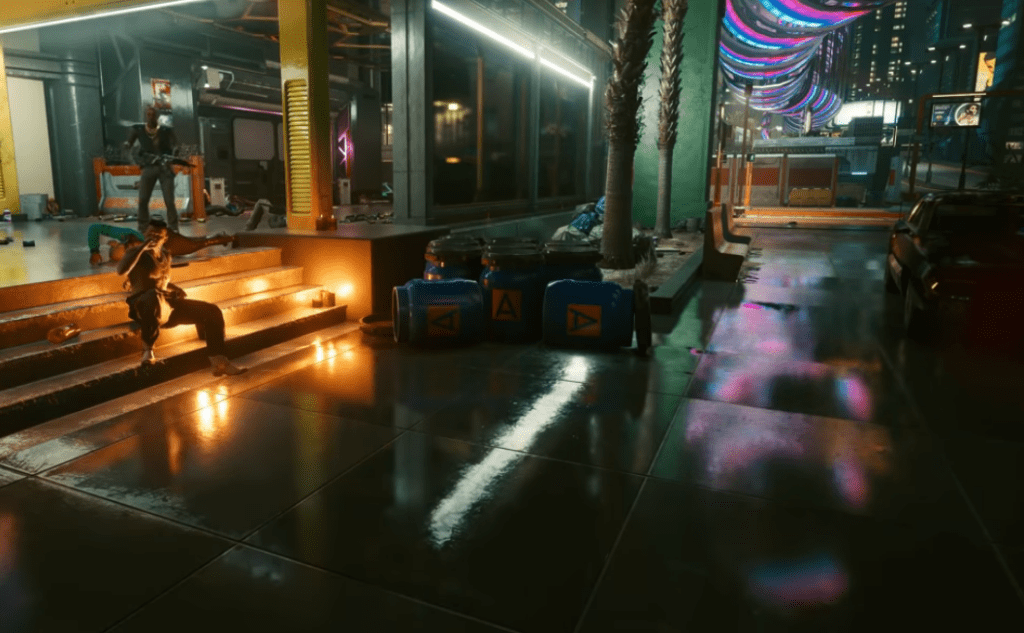Ever since their creation, games have been a popular hobby for people of all ages: in the United States alone, gaming figures among the top 5 hobbies according to a recent report by Statista. With the passage of time, player expectations grew, games became increasingly complex in return, and so did the technologies behind them – game engines.
In April 2022, Epic Games released Unreal Engine 5, their state-of-the-art game engine, to all developers in the world. The tool includes a wide variety of innovative features that can significantly enhance the visual quality, immersion, and interactivity of games, allowing developers to create games that were once thought impossible.
In this article, we will go through the basics of a game engine, showing how useful it is to game developers, and take a closer look at some of the key Unreal Engine 5 features, discussing how they can help developers create the next revolution in the gaming industry.
What is a game engine?
In simple terms, a game engine is the software framework behind the functioning of a game. It provides developers with a variety of tools and libraries they can employ to create and integrate all parts of a game, including, but not limited to its programming, game assets, rendering engine, and much more.

Without a game engine, developers would have to create functions and systems from the ground up to handle game physics, files, rendering, and much more, which is as costly as it is time-consuming. Therefore, game engines come bundled with a series of pre-built features and functions that developers can use from the get-go to create their games, being an essential tool to create all those virtual experiences we know and love.
Unreal Engine 5 features: what are they?
Speaking of game engines, there are tens (if not hundreds) of them available for you to use, but the most widely used are Unity and Unreal Engine, whose 5th edition has been making waves in the game industry with its new features.
Let’s take a brief look at them below, shall we?
Nanite virtualized geometry
One of Unreal Engine 5’s most exciting features, Nanite is its new virtualized geometry system. By using an internal mesh format and extremely efficient rendering technologies, it’s possible to render even the tiniest details of a 3D model and high object counts with a negligible performance impact.
Nowadays, game artists often have to create multiple 3D models for various levels of detail (LODs), with each having fewer polygons and lower-resolution textures than the last. This is extremely useful for rendering objects that are far away in a scene without compromising the game’s performance while keeping a decent frame quality.
With Nanite, however, these days will be long gone: developers will be able to import models, environments, and scenes with millions (and maybe billions) of polygons straight into the game engine. As the game engine will scale the LOD in real time to maintain high frame rates, you won’t need to take polygon count/memory budgets into account, letting developers and game artists create models with pixel-scale details and billions of polygons.
Therefore, as developers and studios release their projects made with Unreal Engine 5, you can expect games to become more and more realistic as the years go by – as if Ghost of Tsushima and Cyberpunk 2077 with ray-traced graphics weren’t realistic enough already.

Lumen global lighting system
Unreal Engine 5 also offers the Lumen Global Lighting System, allowing for realistic dynamic lighting in many games. Basically, it helps developers create lighting effects that look like something straight from the real world by taking into account how light bounces off of different surfaces and the way different materials scatter (or absorb) the light in real-time.
For example, if you’re exploring a dark room and you turn your flashlight on, the entire room should get lit – even if a little – due to all the reflections and scattering happening around the scene.
Virtual shadow maps
Traditionally, in video games, developers use shadow maps to convey dynamic shadows in a scene. They work by rendering the scene from the perspective of a light source and then using that information to determine where to cast some shadows. However, traditional shadow maps often result in blocky or highly pixelated shadows (especially when rendered at great distances), making them look unrealistic and diminishing the game’s visual quality.

To help combat this issue, Unreal Engine 5 offers a system of Virtual Shadow Maps. This feature is similar to Nanite in that it virtualizes complex rendering techniques and only delivers details that are important to the player. In the case of virtualized shadow maps, the game engine generates a huge shadow map which is broken down into chunks, rendering only those the player can see.
This technology allows developers to create smoother and more detailed shadows that are much less prone to the blocky or pixelated artifacts that would otherwise occur with traditional shadow maps. It also lets developers implement accurate dynamic shadows, which will go hand in hand with Lumen’s global illumination system.
Temporal super resolution (TSR)
Temporal Super Resolution is another Unreal Engine 5 technique developers can use to create fantastic games. By using graphical information from multiple frames to create images with higher resolution, TSR can drastically improve the visual quality of a game without hampering its performance by a lot.
This technology effectively improves the quality of motion graphics or other visual elements that dart across the screen all the time. It’s also possible to use TSR to improve the clarity of text and other small details, making them look sharp and clear, which can be of particular importance for next-generation virtual reality (VR) applications.

All in all, Temporal Super Resolution is an impressive general solution that comes bundled with Unreal Engine 5, not requiring any specific software or hardware to make it work.
Mass AI
Unreal Engine 5 also comes bundled with Mass AI, a tool that allows developers to create a large number of AI characters in their games, with each having a mind of its own.
In traditional open-world games, NPCs with AIs will only start acting the moment the player enters their area. With Mass AI, there could be a paradigm shift in this aspect of game development, as it will be possible to simulate thousands of entities at the same time. Other tools that further enhance Mass AI with the creation of truly immersive worlds include Smart Objects and Mass Avoidance.
To exemplify this, note that developers working on “The Matrix Awakens” have recently given a tech talk regarding the generation of a world that feels alive, in which they showcased a simulation of more than “100,000 mass entities at once” within the game – this, of course, regardless of the player’s location.

All in all, Mass AI will allow for extremely dynamic, immersive, and interactive game environments. Can you imagine walking through a bustling medieval city where NPCs behave realistically and independently of each other? They might be going about their own business, talking with fellow citizens, or even reacting to the player’s actions on the spot. How cool would that be?
Revolutionizing the Gaming Landscape: Game-Changing Features in Unreal Engine 5
Unreal Engine 5 (UE5) brings a wave of revolutionary features that are poised to redefine the gaming industry. From a fully dynamic global illumination system known as Lumen, which reacts instantly to scene and light changes, to the innovative World Partition system that efficiently manages huge worlds, UE5 changes the way developers create games.
The introduction of Nanite technology allows for highly detailed assets with minimal rendering overhead, paving the way for native 4K visuals even on platforms like PlayStation 5. With Metahuman and Metasounds, artists and designers can easily achieve film-quality visual and audio effects.
Furthermore, the iteration workflow and File Per Actor system streamline development, enabling faster and more efficient processes. UE5’s array of features, from full-body IK to physics systems, points toward the future of gaming, where players can explore more dynamic and visually stunning worlds than ever before.
Conclusion
In conclusion, Unreal Engine 5 is a powerful tool for game developers across the globe, which includes a variety of innovative and revolutionary features that can significantly enhance the visual quality, immersion, and interactivity of a game.
The Nanite system, for example, allows developers to import realistic and extremely detailed models into the game. Lumen and Virtual Shadow Maps work in tandem to ensure the game’s lights and shadows look amazing at a minor performance impact. Temporal Super Resolution improves the quality of motion graphics, while the Mass AI system allows developers to create interactive and immersive simulations in which characters behave realistically and independently of each other.
Together, these features (and many more!) make Unreal Engine 5 a revolutionary tool for game developers looking to create a high-quality and immersive game. With these elements being enabled from the get-go, it’s just a matter of setting up your Unreal Engine 5 environment and getting your hands dirty, basking yourself in all of its glorious features.
When it comes to creating great games, working with qualified developers is the best way to get an incredible game up and running in no time. And that’s where Main Leaf comes in! We are a professional game development studio, developing games on-demand from pre-production to launch on major digital storefronts.
With our roster of 70+ passionate experts, we are the ultimate choice for those looking to create the best possible game experience for their players. No matter how simple or complex your game is, Main Leaf will take care of everything needed to bring your vision to life.
Interested? Look no further and request a game quote right now – we will get back to you in no more than 24 hours – and let’s get started.

